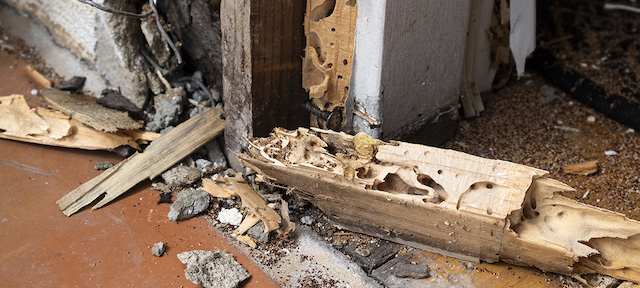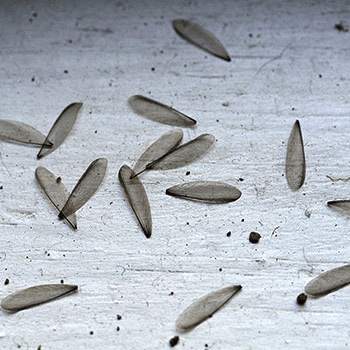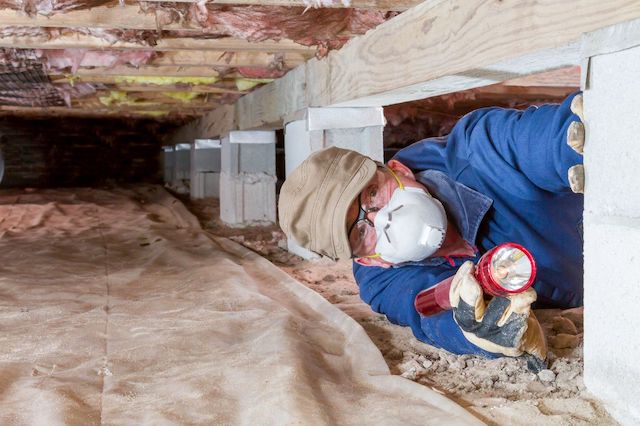Home Sale Deal Breakers: Termites
Selling your home can be a stressful endeavor. Even in this seller’s market where you may get offers above asking price, most buyers will still require a home inspection contingency. And finding termites and the damage they have done can make a deal fall through fast.

Finding out that your house is infested with termites is no fun at any time, but especially when the discovery is made during a home inspection for your home sale. Sadly, many homeowners have no idea there is a problem with termites until a lot of damage has already been done.
Termites are sneaky, destructive little pests. Unfortunately, some homeowners attract them to their homes without realizing it. For example, even a little bit of moisture from poor drainage, leaks, or poor ventilation combined with wood can be very alluring for termites. The cellulose in wood is consumed by them for nutrition, and they require moisture, so they don’t dry out. Even soggy soil close to your foundation can be very inviting to termites.
Termites are also attracted to the protection from foam board insulation and exterior wall solutions like Dryvit, a synthetic version of cement siding. They will chew right through them to get to wood. They can also enter the home via cracks in the foundation as well. Once in, they will find wood and begin to feed on it, thus causing damage to the home.
How do you know if you have a termite infestation?
When investigating possible termite infestation, here are some things to look out for:
- Hollow wood: Try knocking or tapping on your wood. If it sounds hollow, it’s likely you have termites. You can take a screwdriver and press it into the wood to test it. If the wood gives way easily, that is a bad sign.
- Mud tubes: Subterranean termites create their own “highways” out of tubes of mud to connect the wood they eat to soil. These mud tubes, made up of wood and soil, are about as wide as a pencil. Spotting them means you have termites, but if you don’t find them it doesn’t mean you don’t have termites. The subterranean termites may not have made them yet, and drywood termites don’t make mud tubes, so beware of those as well.

- Swarm evidence: Subterranean termites shed their wings in piles when they set off to create a new colony, so if you see piles of wings, you likely have a termite infestation.
- Frass: If you see small, granular, oval pellets on your door frames, baseboards, and windowsills, they may be frass, or termite droppings.
- Peeling paint: When termites damage drywall, moisture enters the space between the surface and the paint, causing paint to bubble or peel. There are other reasons your paint may buckle, but if you note this in tandem with other signs, you may have a termite infestation.
- Head banging: Strange clicking sounds coming from inside of your walls may not be your imagination. When soldier termites detect a threat, they signal danger to other termites by banging their heads against the wood and shaking their bodies.
- Seeing live termites: It is possible that you may come across some live termites. It’s important to distinguish them from flying ants so that you know what you’re dealing with. Termites’ rear wings are even in size, their abdomens are thick, and their antennae are straight. On the flip side, flying ants have wings of different size, are thinner through the middle, and have bent antennae.
There are several ways to help prevent a termite infestation in your home:
- Remove cellulose-based debris from around your house. Any sort of organic wood material around your house will attract termites.
- Get rid of any wood that is in direct contact with the ground, like wood lattice or siding, or door/window frames that go to the ground.
- Have your home pre-treated for termites. If you’re going to build a home, set a termite barrier on the land before starting construction.
- Remove cracks and crevices in your home to prevent termite access.
- Hire a professional to do termite inspections annually.

Whether you are selling your home soon or don’t plan to sell for a long time, be sure that termites aren’t causing damage that will mean costly repairs, and the probability of losing buyers when selling.
If you are in the market to buy or sell a home (or both), let me Sandra Nickel, and my Hat Team of Professionals assist you with all your real estate needs! Call us today at 334-834-1500 and check out https://www.homesforsaleinmontgomeryalabama.com for more information.
Photo credits: homeinspector.org, trustterminix.com, thisoldhouse.com










